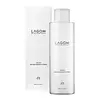What's inside
What's inside
 Key Ingredients
Key Ingredients

 Benefits
Benefits

 Concerns
Concerns

 Ingredients Side-by-side
Ingredients Side-by-side

Bifida Ferment Lysate 42%
Skin ConditioningGalactomyces Ferment Filtrate 21%
HumectantButylene Glycol
HumectantMethyl Gluceth-20
HumectantWater
Skin ConditioningNiacinamide
SmoothingPEG-90
Humectant1,2-Hexanediol
Skin ConditioningGlycerin
HumectantSqualane
EmollientAlteromonas Ferment Extract
Skin ConditioningSilk Extract
Skin ConditioningGoat Milk Extract
Sodium Hyaluronate
HumectantPanthenol
Skin ConditioningAdenosine
Skin ConditioningGlycereth-26
HumectantXanthan Gum
EmulsifyingPolyglyceryl-3 Distearate
EmulsifyingGlyceryl Stearate Se
EmulsifyingGlyceryl Stearate Citrate
EmollientPolyglyceryl-3 Methylglucose Distearate
EmulsifyingCarbomer
Emulsion StabilisingTromethamine
BufferingEthylhexylglycerin
Skin ConditioningCaprylyl Glycol
EmollientTropolone
Skin ConditioningDisodium EDTA
Bifida Ferment Lysate 42%, Galactomyces Ferment Filtrate 21%, Butylene Glycol, Methyl Gluceth-20, Water, Niacinamide, PEG-90, 1,2-Hexanediol, Glycerin, Squalane, Alteromonas Ferment Extract, Silk Extract, Goat Milk Extract, Sodium Hyaluronate, Panthenol, Adenosine, Glycereth-26, Xanthan Gum, Polyglyceryl-3 Distearate, Glyceryl Stearate Se, Glyceryl Stearate Citrate, Polyglyceryl-3 Methylglucose Distearate, Carbomer, Tromethamine, Ethylhexylglycerin, Caprylyl Glycol, Tropolone, Disodium EDTA
Water
Skin ConditioningButylene Glycol
HumectantPropanediol
SolventGlycerin
Humectant1,2-Hexanediol
Skin ConditioningXanthan Gum
EmulsifyingGlycereth-25 PCA Isostearate
EmulsifyingDiphenyl Dimethicone
EmollientTriethylhexanoin
MaskingEthylhexylglycerin
Skin ConditioningAdenosine
Skin ConditioningDisodium EDTA
Hydrogenated Lecithin
EmulsifyingHyaluronic Acid
HumectantHydrolyzed Hyaluronic Acid
HumectantPolyglyceryl-10 Oleate
Skin ConditioningSodium Hyaluronate
HumectantTricholoma Matsutake Extract
Skin ConditioningCitrus Aurantium Dulcis Oil
MaskingHydrolyzed Cicer Seed Extract
Skin ProtectingRhododendron Chrysanthum Leaf Extract
MaskingLavandula Angustifolia Oil
MaskingGeranium Maculatum Oil
MaskingCitrus Aurantium Bergamia Fruit Oil
MaskingSantalum Album Oil
MaskingHydrolyzed Vegetable Protein
Skin ConditioningMaltodextrin
AbsorbentRose Flower Oil
MaskingChamomilla Recutita Flower Oil
MaskingPalmitoyl Tripeptide-5
Skin ConditioningStyrax Benzoin Gum
MaskingCommiphora Myrrha Oil
MaskingWater, Butylene Glycol, Propanediol, Glycerin, 1,2-Hexanediol, Xanthan Gum, Glycereth-25 PCA Isostearate, Diphenyl Dimethicone, Triethylhexanoin, Ethylhexylglycerin, Adenosine, Disodium EDTA, Hydrogenated Lecithin, Hyaluronic Acid, Hydrolyzed Hyaluronic Acid, Polyglyceryl-10 Oleate, Sodium Hyaluronate, Tricholoma Matsutake Extract, Citrus Aurantium Dulcis Oil, Hydrolyzed Cicer Seed Extract, Rhododendron Chrysanthum Leaf Extract, Lavandula Angustifolia Oil, Geranium Maculatum Oil, Citrus Aurantium Bergamia Fruit Oil, Santalum Album Oil, Hydrolyzed Vegetable Protein, Maltodextrin, Rose Flower Oil, Chamomilla Recutita Flower Oil, Palmitoyl Tripeptide-5, Styrax Benzoin Gum, Commiphora Myrrha Oil
 Reviews
Reviews

Ingredients Explained
These ingredients are found in both products.
Ingredients higher up in an ingredient list are typically present in a larger amount.
1,2-Hexanediol is a synthetic liquid and another multi-functional powerhouse.
It is a:
- Humectant, drawing moisture into the skin
- Emollient, helping to soften skin
- Solvent, dispersing and stabilizing formulas
- Preservative booster, enhancing the antimicrobial activity of other preservatives
Adenosine is in every living organism. It is one of four components in nucleic acids that helps store our DNA.
Adenosine has many benefits when used. These benefits include hydrating the skin, smoothing skin, and reducing wrinkles. Once applied, adenosine increases collagen production. It also helps with improving firmness and tissue repair.
Studies have found adenosine may also help with wound healing.
In skincare products, Adenosine is usually derived from yeast.
Learn more about AdenosineButylene Glycol (or BG) is used within cosmetic products for a few different reasons:
Overall, Butylene Glycol is a safe and well-rounded ingredient that works well with other ingredients.
Though this ingredient works well with most skin types, some people with sensitive skin may experience a reaction such as allergic rashes, closed comedones, or itchiness.
Learn more about Butylene GlycolDisodium EDTA plays a role in making products more stable by aiding other preservatives.
It is a chelating agent, meaning it neutralizes metal ions that may be found in a product.
Disodium EDTA is a salt of edetic acid and is found to be safe in cosmetic ingredients.
Learn more about Disodium EDTAEthylhexylglycerin (we can't pronounce this either) is commonly used as a preservative and skin softener. It is derived from glyceryl.
You might see Ethylhexylglycerin often paired with other preservatives such as phenoxyethanol. Ethylhexylglycerin has been found to increase the effectiveness of these other preservatives.
Glycerin is already naturally found in your skin. It helps moisturize and protect your skin.
A study from 2016 found glycerin to be more effective as a humectant than AHAs and hyaluronic acid.
As a humectant, it helps the skin stay hydrated by pulling moisture to your skin. The low molecular weight of glycerin allows it to pull moisture into the deeper layers of your skin.
Hydrated skin improves your skin barrier; Your skin barrier helps protect against irritants and bacteria.
Glycerin has also been found to have antimicrobial and antiviral properties. Due to these properties, glycerin is often used in wound and burn treatments.
In cosmetics, glycerin is usually derived from plants such as soybean or palm. However, it can also be sourced from animals, such as tallow or animal fat.
This ingredient is organic, colorless, odorless, and non-toxic.
Glycerin is the name for this ingredient in American English. British English uses Glycerol/Glycerine.
Learn more about GlycerinSodium Hyaluronate is hyaluronic acid's salt form. It is commonly derived from the sodium salt of hyaluronic acid.
Like hyaluronic acid, it is great at holding water and acts as a humectant. This makes it a great skin hydrating ingredient.
Sodium Hyaluronate is naturally occurring in our bodies and is mostly found in eye fluid and joints.
These are some other common types of Hyaluronic Acid:
Learn more about Sodium HyaluronateWater. It's the most common cosmetic ingredient of all. You'll usually see it at the top of ingredient lists, meaning that it makes up the largest part of the product.
So why is it so popular? Water most often acts as a solvent - this means that it helps dissolve other ingredients into the formulation.
You'll also recognize water as that liquid we all need to stay alive. If you see this, drink a glass of water. Stay hydrated!
Learn more about WaterXanthan gum is used as a stabilizer and thickener within cosmetic products. It helps give products a sticky, thick feeling - preventing them from being too runny.
On the technical side of things, xanthan gum is a polysaccharide - a combination consisting of multiple sugar molecules bonded together.
Xanthan gum is a pretty common and great ingredient. It is a natural, non-toxic, non-irritating ingredient that is also commonly used in food products.
Learn more about Xanthan Gum